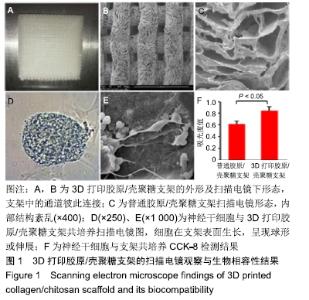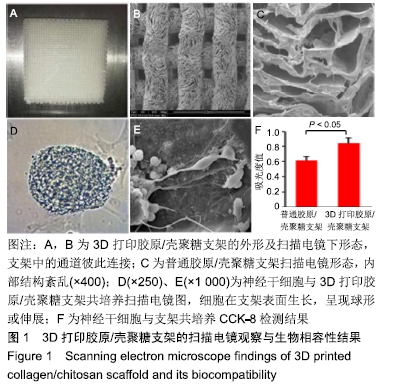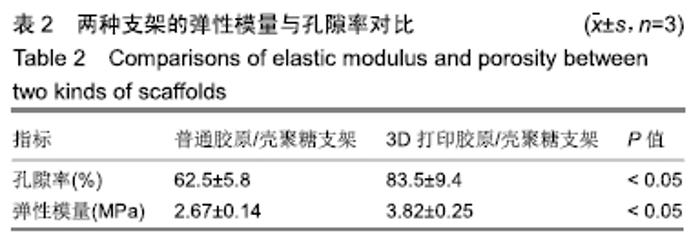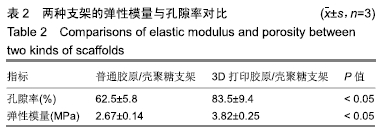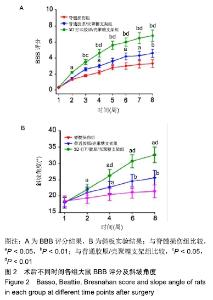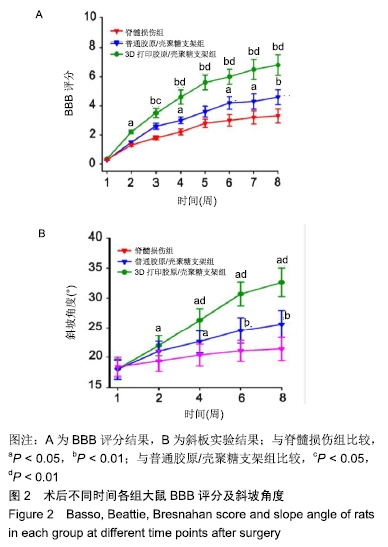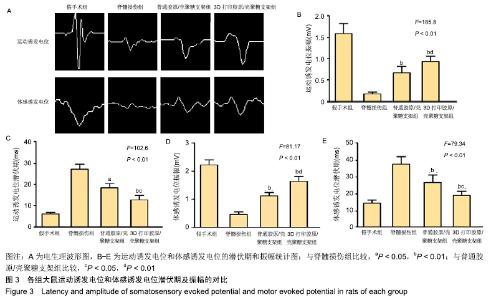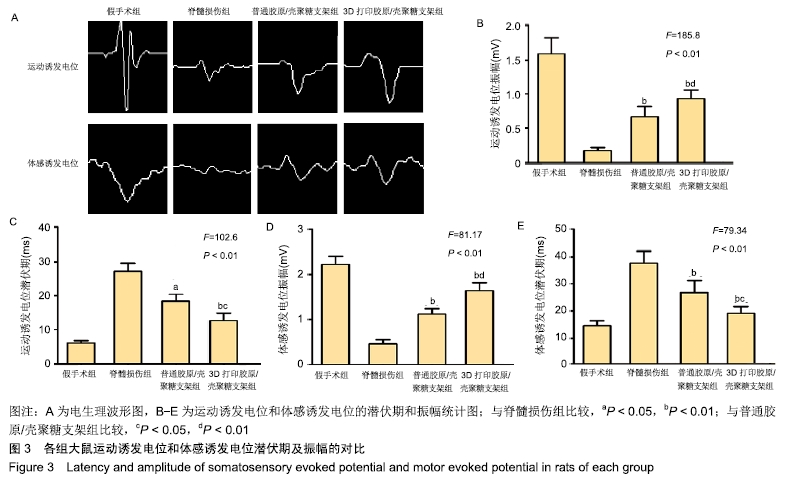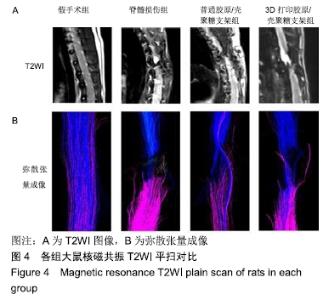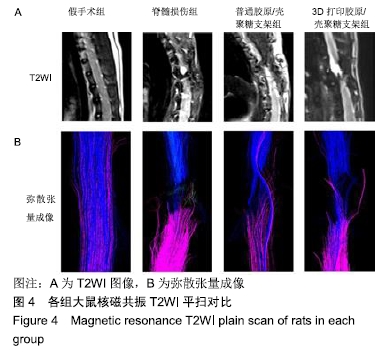[1] FAWCETT JW. Overcoming inhibition in the damaged spinal cord.J Neurotrauma.2006; 23(3-4):371-383.
[2] LU P, WANG Y, GRAHAM L, et al. Long-distance growth and connectivity of neural stem cells after severe spinal cord injury. Cell.2012;150(6):1264-1273.
[3] GU L, SHAN T, MA YX, et al. Novel Biomedical Applications of Crosslinked Collagen.Trends Biotechnol.2019;37(5):464-491.
[4] MAQUET V, MARTIN D, SCHOLTES F, et al. Poly(D,L-lactide) foams modified by poly(ethylene oxide)-block-poly(D,L-lactide) copolymers and a-FGF: in vitro and in vivo evaluation for spinal cord regeneration.Biomaterials. 2001;22(10):1137-1146.
[5] TAN Y, RICHARDS DJ, TRUSK TC, et al. 3D printing facilitated scaffold-free tissue unit fabrication.Biofabrication. 2014;6(2): 024111.
[6] ROSENZWEIG DH, CARELLI E, STEFFEN T, et al. 3D-Printed ABS and PLA Scaffolds for Cartilage and Nucleus Pulposus Tissue Regeneration.Int J Mol Sci.2015;16(7):15118-15135.
[7] UDHAYAKUMAR S, SHANKAR KG, SOWNDARYA S, et al. L-Arginine intercedes bio-crosslinking of a collagen–chitosan 3D-hybrid scaffold for tissue engineering and regeneration: in silico, in vitro, and in vivo studies.Rsc Adv. 2017;7(40):25070-25088.
[8] RAN J, HU J, SUN G, et al. A novel chitosan-tussah silk fibroin/nano-hydroxyapatite composite bone scaffold platform with tunable mechanical strength in a wide range.Int J Biol Macromol. 2016;93(Pt A):87-97.
[9] KOURGIANTAKI A. Neural Stem Cells (NSCs) in 3D Collagen Scaffolds: developing pharmacologically monitored neuroimplants for Spinal Cord Injury (SCI). Front Syst Neurosci.2014.DOI: 10.3389/conf.fnsys.2014.05.00003
[10] KOFFLER J, ZHU W, QU X, et al. Biomimetic 3D-printed scaffolds for spinal cord injury repair. Nat Med.2019;25(2):263-269.
[11] 贺丰,俞兴,穆晓红,等.新型脊髓完全横断缺损模型大鼠的建立[J].中国组织工程研究, 2016,20(5):635-639.
[12] 班德翔,冯世庆,宁广智,等.骨髓间充质干细胞移植促进大鼠脊髓损伤后行为功能恢复的研究[J].天津医药,2009,37(5):383-386,436.
[13] 张建军,王东,史焕昌,等.亚低温干预并神经干细胞蛛网膜下腔移植修复大鼠脊髓损伤[J].中国组织工程研究,2018,22(5):686-691.
[14] CHEN C, ZHAO ML, ZHANG RK, et al. Collagen/heparin sulfate scaffolds fabricated by a 3D bioprinter improved mechanical properties and neurological function after spinal cord injury in rats.J Biomed Mater Res A.2017;105(5):1324-1332.
[15] 陈晓波.临床观察无髓性损伤的慢性颈脊髓压迫及补肾活血方对其大鼠模型的干预机制探讨[D].广州:广州中医药大学,2017.
[16] 吴晓明,高文山,王静,等.盐酸川芎嗪联合骨髓间充质干细胞移植对脊髓损伤模型大鼠的神经保护[J].中国组织工程研究,2016,20(1): 95-101.
[17] GENTLEMAN E, LAY AN, DICKERSON DA, et al. Mechanical characterization of collagen fibers and scaffolds for tissue engineering.Biomaterials.2003;24(21):3805-3813.
[18] ALVES-SAMPAIO A, GARCÍA-RAMA C, COLLAZOS-CASTRO JE. Biofunctionalized PEDOT-coated microfibers for the treatment of spinal cord injury.Biomaterials.2016;89:98-113.
[19] TENG YD, LAVIK EB, QU X, et al. Functional recovery following traumatic spinal cord injury mediated by a unique polymer scaffold seeded with neural stem cells.Proc Natl Acad Sci U S A. 2002; 99(5): 3024-3029.
[20] GOMES ED, MENDES SS, LEITE-ALMEIDA H, et al. Combination of a peptide-modified gellan gum hydrogel with cell therapy in a lumbar spinal cord injury animal model.Biomaterials. 2016;105:38-51.
[21] LI X, DAI J. Bridging the gap with functional collagen scaffolds: tuning endogenous neural stem cells for severe spinal cord injury repair.Biomater Sci.2018;6(2):265-271.
[22] SAHARIAH P, MÁSSON M. Antimicrobial Chitosan and Chitosan Derivatives: A Review of the Structure-Activity Relationship. Biomacromolecules.2017;18(11):3846-3868.
[23] YI S, XU L, GU X. Scaffolds for peripheral nerve repair and reconstruction.Exp Neurol. 2019;319:112761.
[24] YAO ZA, CHEN FJ, CUI HL, et al. Efficacy of chitosan and sodium alginate scaffolds for repair of spinal cord injury in rats.Neural Regen Res.2018;13(3):502-509.
[25] STRALEY KS, FOO CW, HEILSHORN SC. Biomaterial design strategies for the treatment of spinal cord injuries.J Neurotrauma. 2010;27(1):1-19.
[26] JURGA M, DAINIAK MB, SARNOWSKA A, et al. The performance of laminin-containing cryogel scaffolds in neural tissue regeneration.Biomaterials.2011;32(13):3423-3434.
[27] DANESHMANDI S, DIBAZAR SP, FATEH S. Effects of 3-dimensional culture conditions (collagen-chitosan nano-scaffolds) on maturation of dendritic cells and their capacity to interact with T-lymphocytes.J Immunotoxicol.2015;13(2):1-8.
[28] ZHANG Q, SHI B, DING J, et al. Polymer scaffolds facilitate spinal cord injury repair. Acta Biomater.2019;88:57-77.
[29] HELLAL F, HURTADO A, RUSCHEL J, et al. Microtubule stabilization reduces scarring and causes axon regeneration after spinal cord injury.Science.2011;331(6019):928-931.
|
